The last couple of weekends, my wife and I have gone to Merrifield Garden Center, a small local chain of nurseries/garden centers in Northern Virginia. Our closest location is in Fairfax, along U.S. 29, in an immediate area that hasn’t been too heavily developed. It looks like this from the air:
That might not look too big. But the entire property is between 700,000 and 800,000 square feet, based on rough Google Maps measurements. There are roughly 450,000 square feet of sales floor. To put that in perspective, that’s about three Walmart Supercenters.
This is a garden shop—hoses, soil, birdhouses, etc.—plus a nursery for trees, shrubs, and flowers, plus bulk landscaping supplies like mulch and gravel. It’s a one-stop-shop for everything gardening and landscaping.
What’s interesting to me is this question, which occurs to me because I’ve been writing about retail a lot lately (like here and here). Is this a “category killer” store? Or is it something else? It is, I think, a much older format than the modern category killer store. But in some ways, it feels like a perfect execution of that idea—the combination of knowledge and product depth with economies of scale. There’s a depth of selection here you don’t get in most stores. Look at the shepherd’s hook section. Lowe’s has just two or three.
There’s free bottled water, free popcorn (maybe to quiet down kids, but I’m a kid at heart), free umbrellas to borrow during rain, and plenty of associates out on the sales floor (sales grounds?).
It reminds me of one of our old supermarkets in my hometown, a Grand Union, which used to have free coffee by the entrance. This is a business where every little convenience and perk hasn’t been squeezed out.
There’s also something subtly but distinctly old-fashioned about it. For example, most of the cashiers are young—late high school, early college students?—while most of the sales floor employees are older—retired professors or botanists? They are talkative, friendly, and deeply knowledgeable. It feels like somehow this place has maintained an older labor arrangement, where the kids hold the jobs for seasonal cash and the adults take them to socialize or to share and monetize their knowledge. It doesn’t feel staffed by “retail workers” like Walmart or Home Depot does. Maybe simply by being a specialty store, it attracts a knowledgeable, enthusiastic segment of the labor force.
I believe these garden centers are open year-round, but they probably have extra hands in the spring and summer peak gardening/landscaping seasons. I wonder if the element of seasonality somehow helps maintain this old-fashioned labor arrangement. Seasonal ice cream stands are one of the last places you see high school kids working anywhere these days, at least in my part of the country.
Adding to the old-fashioned vibe is the fact that businesses like this are some of the first to sell as development encroaches. Their huge properties are developers’ dreams. In that way, they’re literally old-fashioned: businesses that exist mostly in non-urban or pre-urban landscapes.
Now maybe you want to see more of it. The long, rectangular shape of the property, carved out of forest, makes it feel like an open-air store; the walls are the forest edges.
It’s really one of those places that feels almost enchanted; the sense of texture, the thoughtful use of space. The color. The sheds and buildings with different departments, all a little visually different.
Even a box store can achieve some of that (I wrote about it here). It’s the kind of place you can get pleasantly lost in. You can forget you’re on a little sliver of land in between highways and subdivisions and strip malls.
Is there some way to keep this when land values turn selling into an offer you can’t refuse? Is there some way to elevate everyday retail with any of the design or selling principles here
I think of how reliant a business like this is on money; all of the homeowners with yards to landscape and money to buy it all here rather than the big-box store. In the absence of that money, we might not get a business that also served as a sort of public amenity. We also probably wouldn’t get a nice park that did the same thing instead. It’s good that private business can sometimes be more than just business, but it shouldn’t have to be, I guess?
And back to my initial question: the giant garden center is probably not related to category-killer big-box stores, but big-box retail could learn something from them.
Related Reading:
Have You Ever Seen a Nursery Like This?
A Small Town With a Big Department Store
Thank you for reading! Please consider upgrading to a paid subscription to help support this newsletter. You’ll get a weekly subscribers-only post, plus full access to the archive: over 600 posts and growing. And you’ll help ensure more material like this!




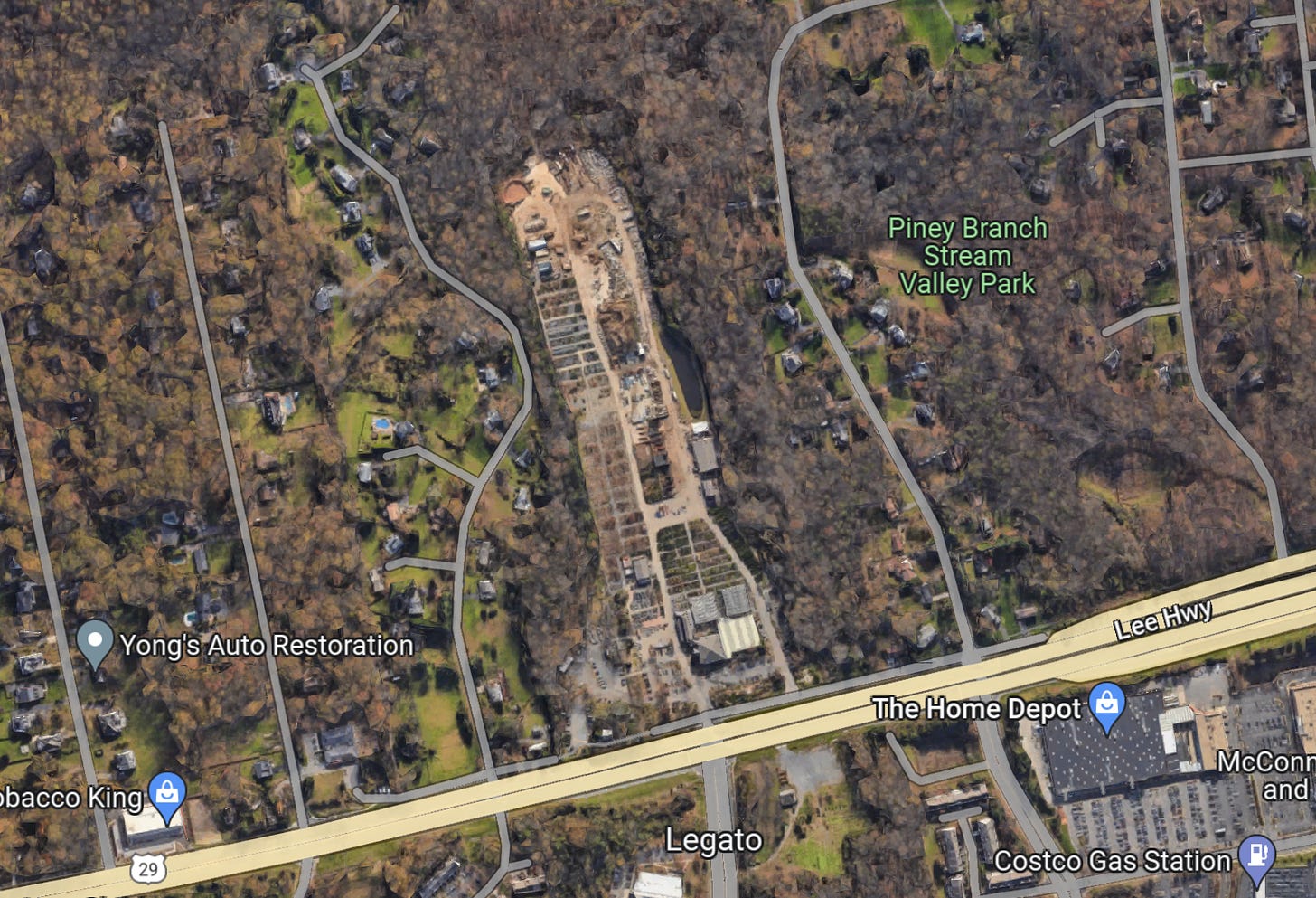
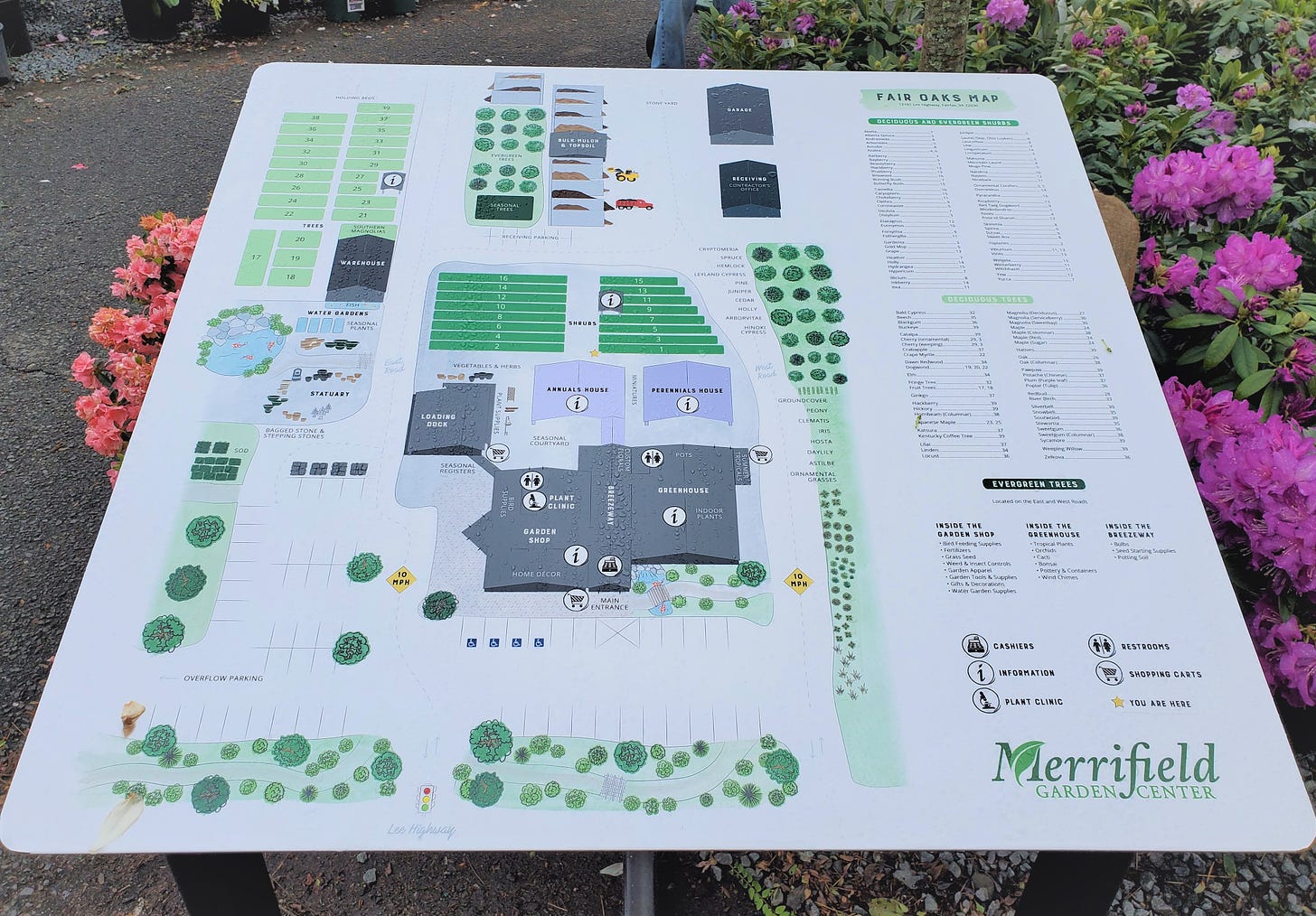
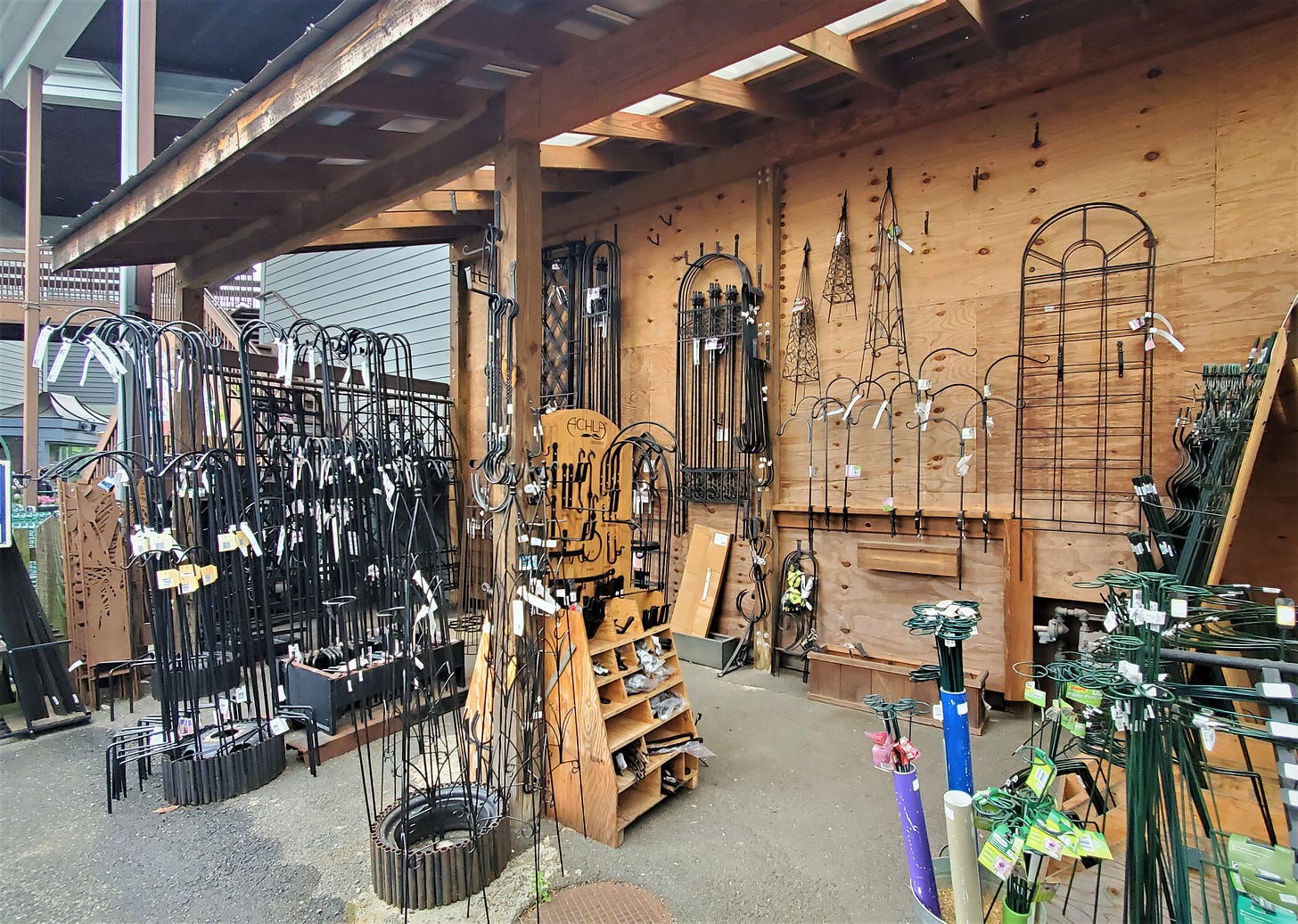
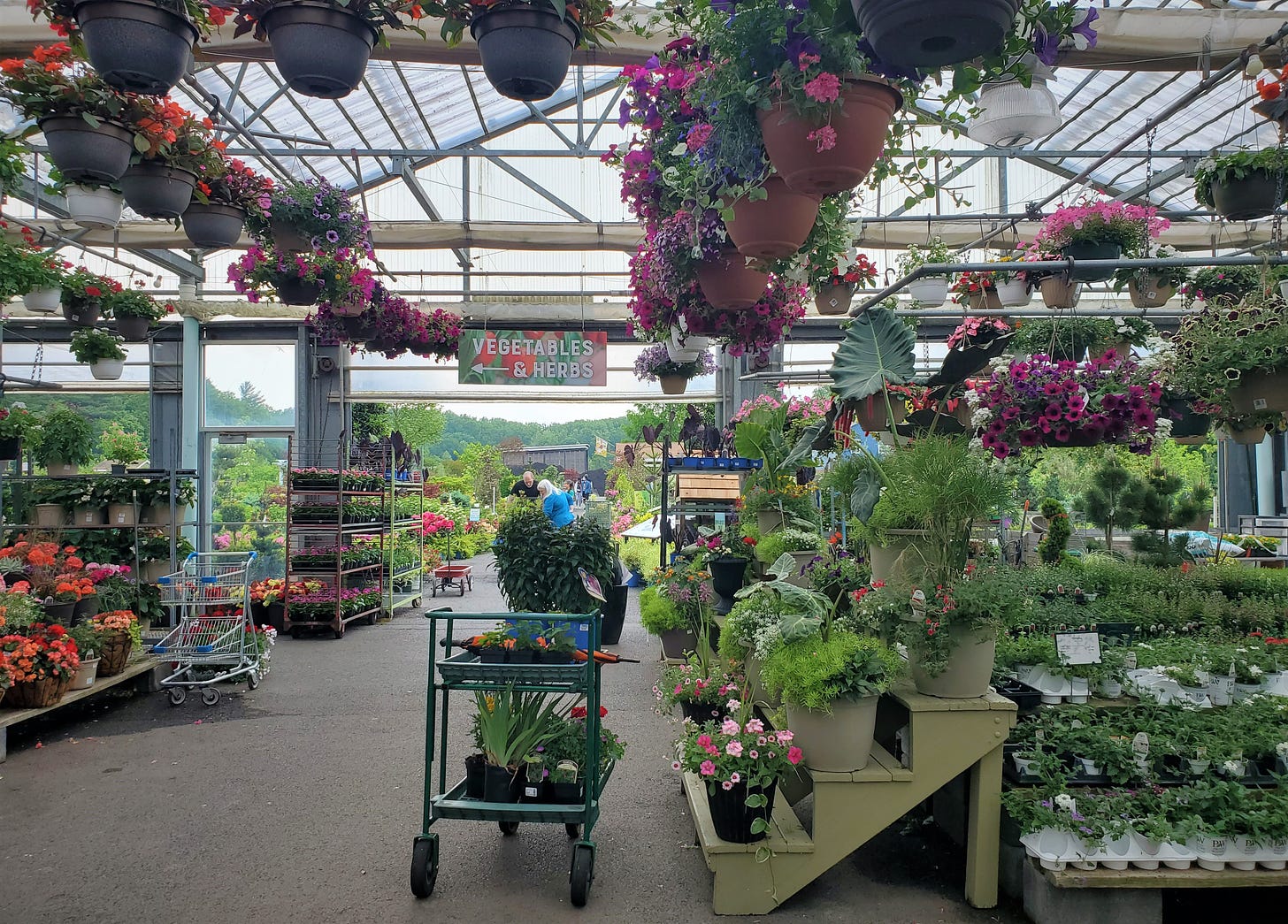
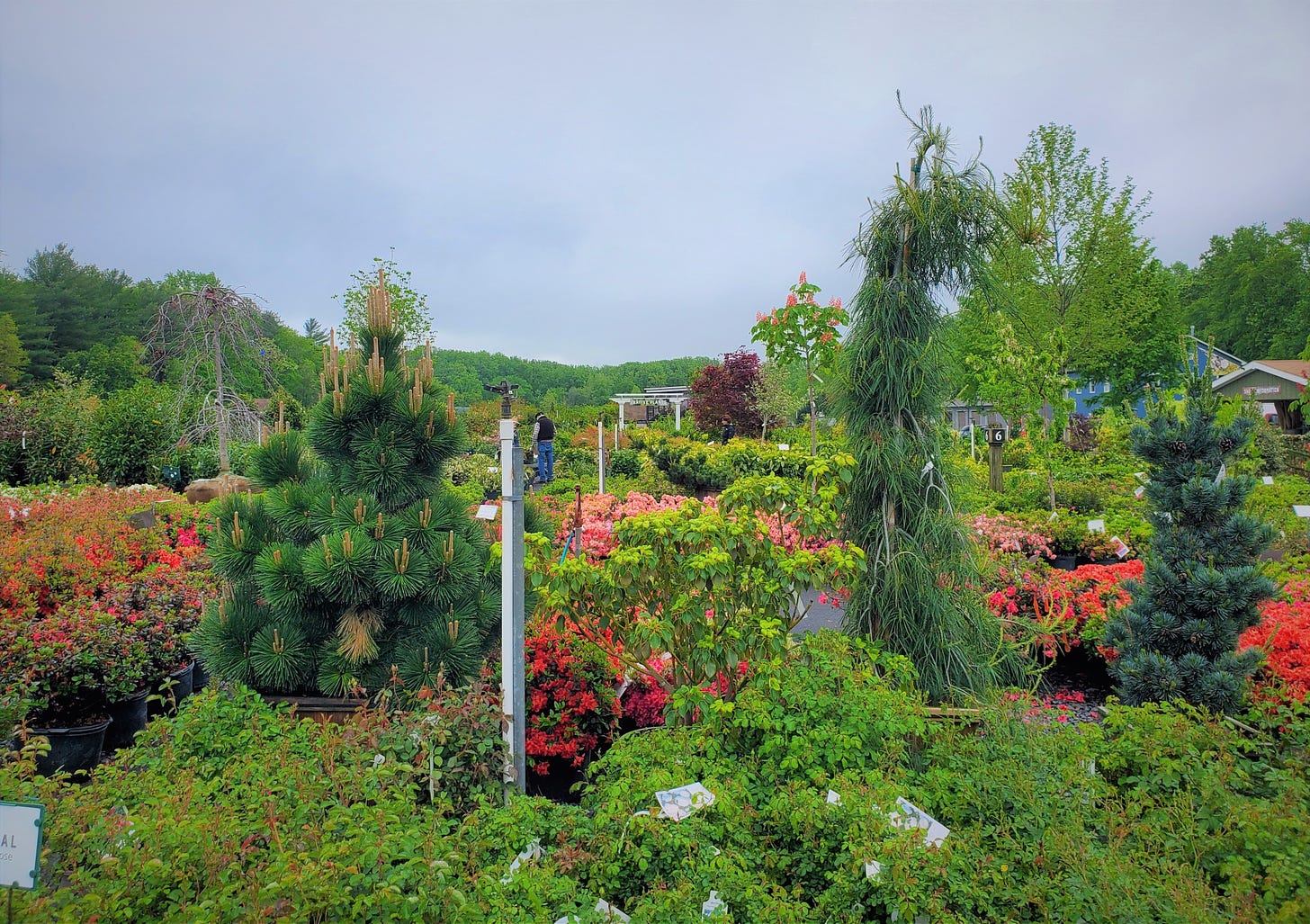

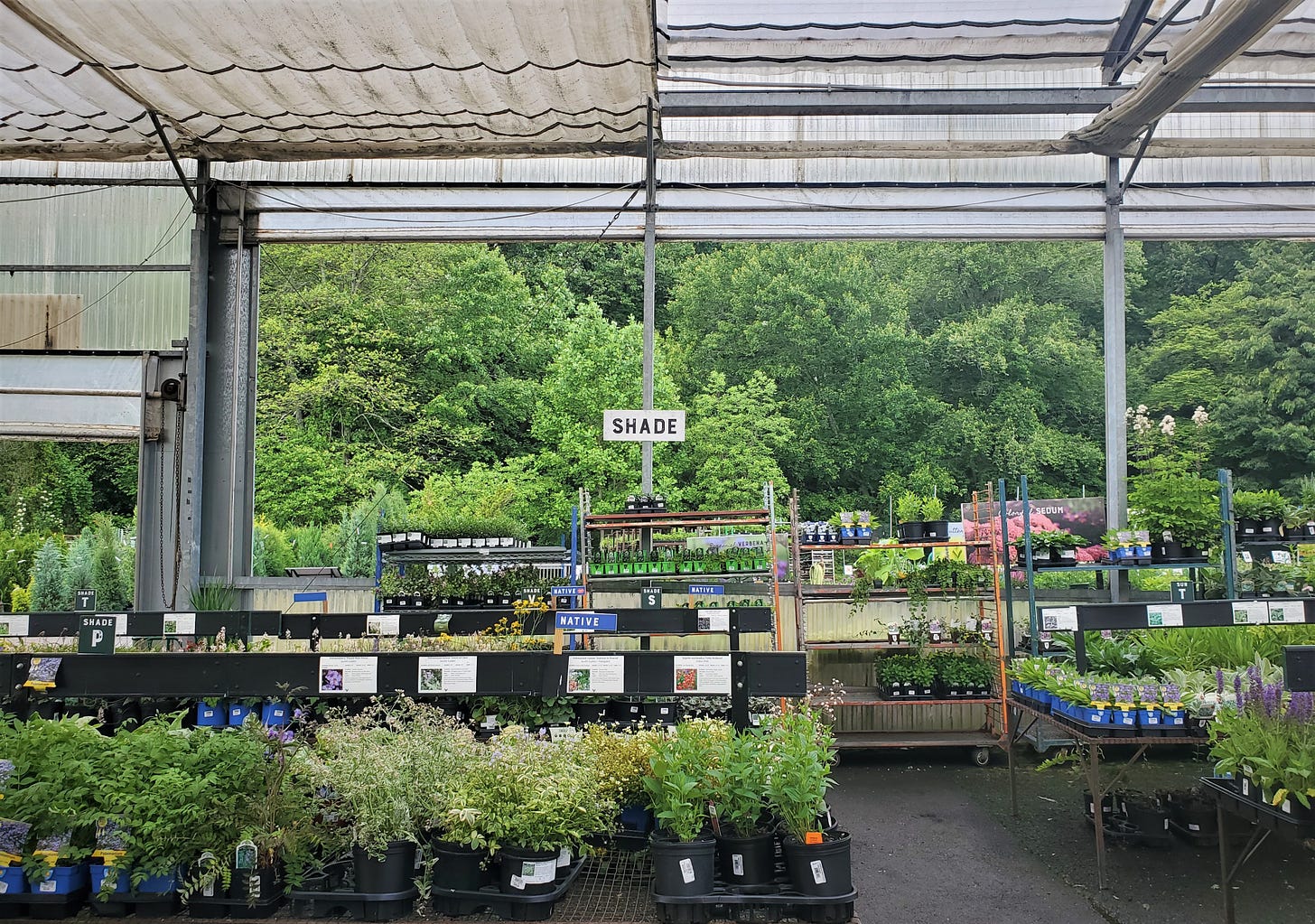
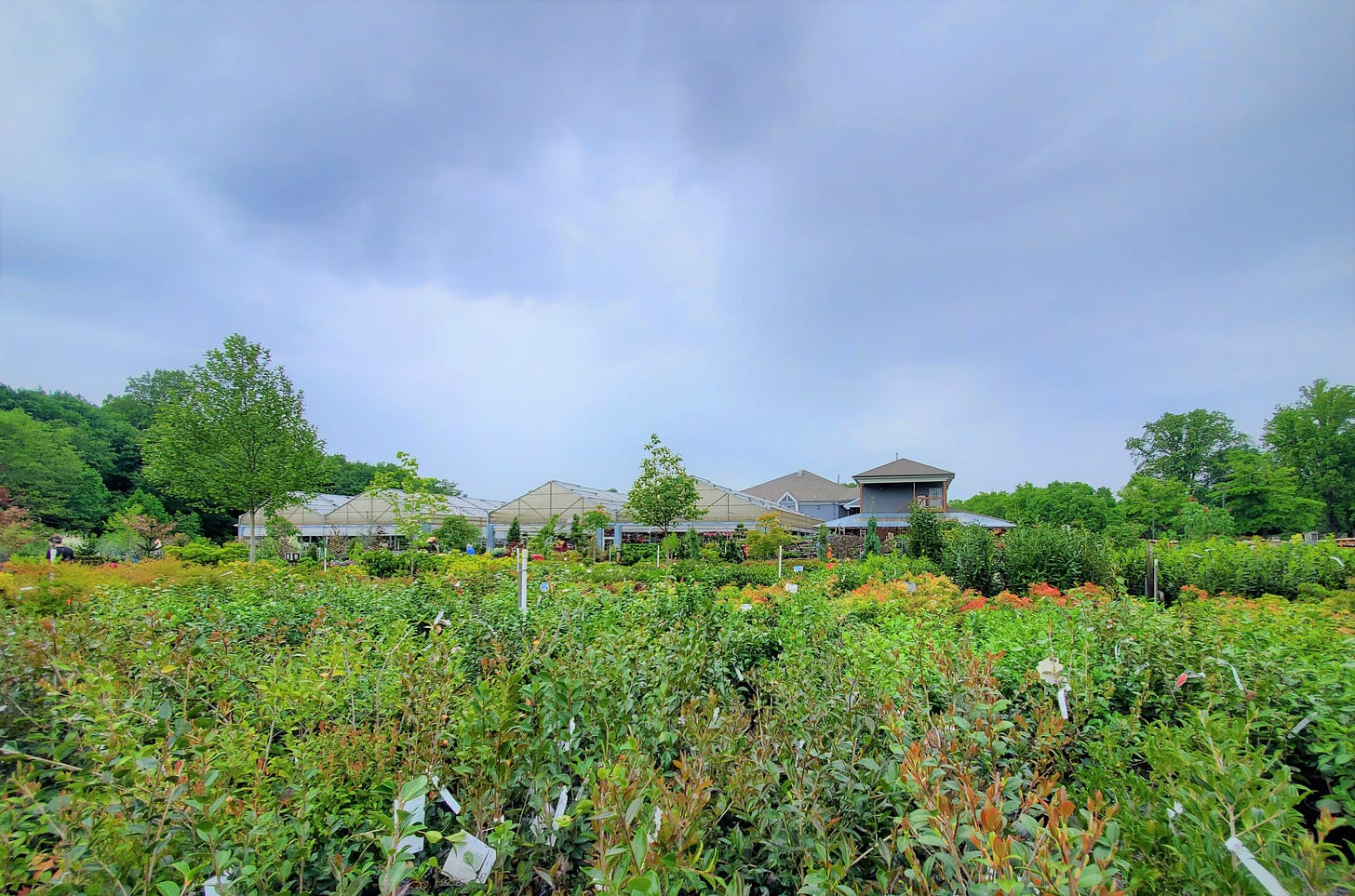
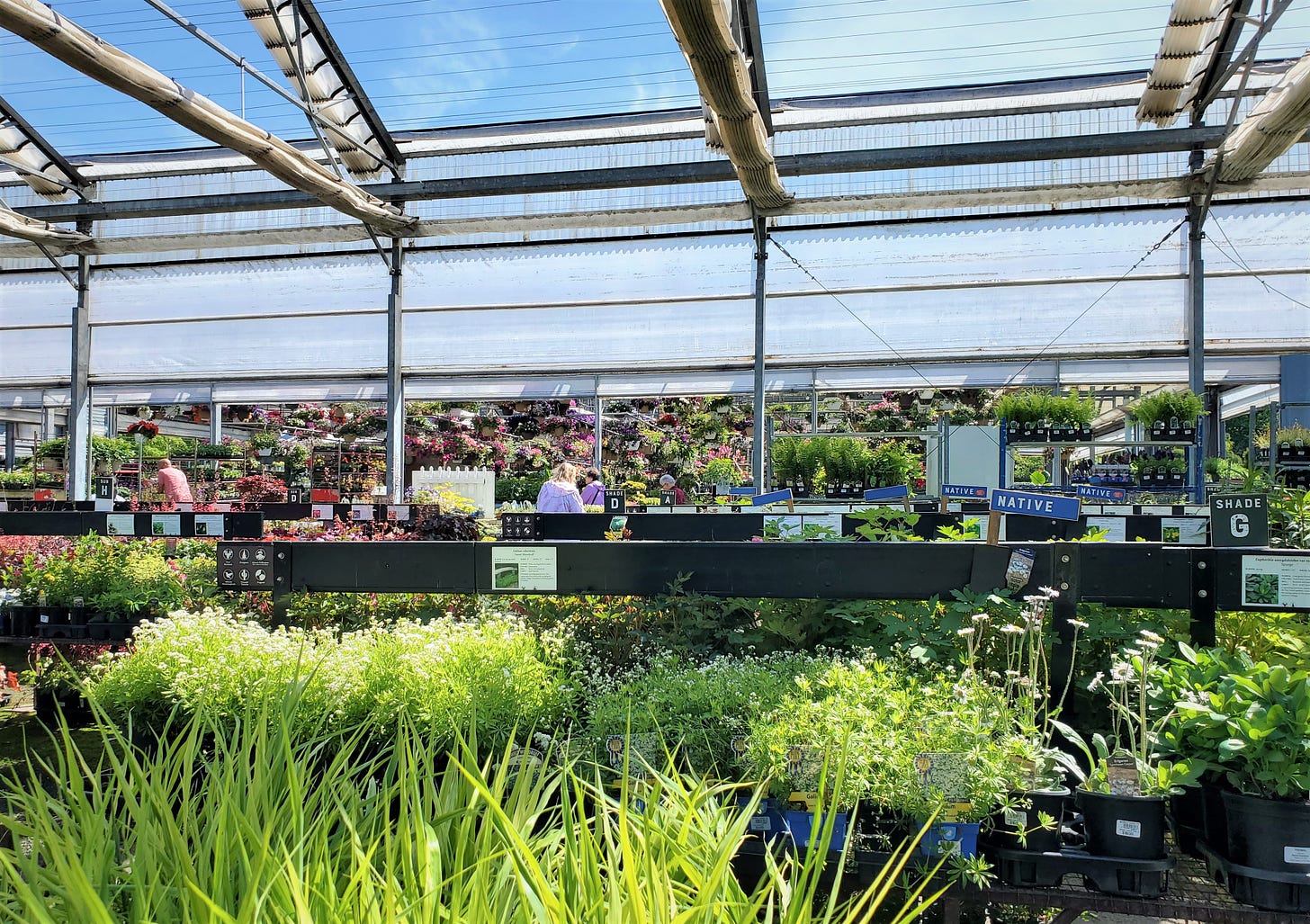
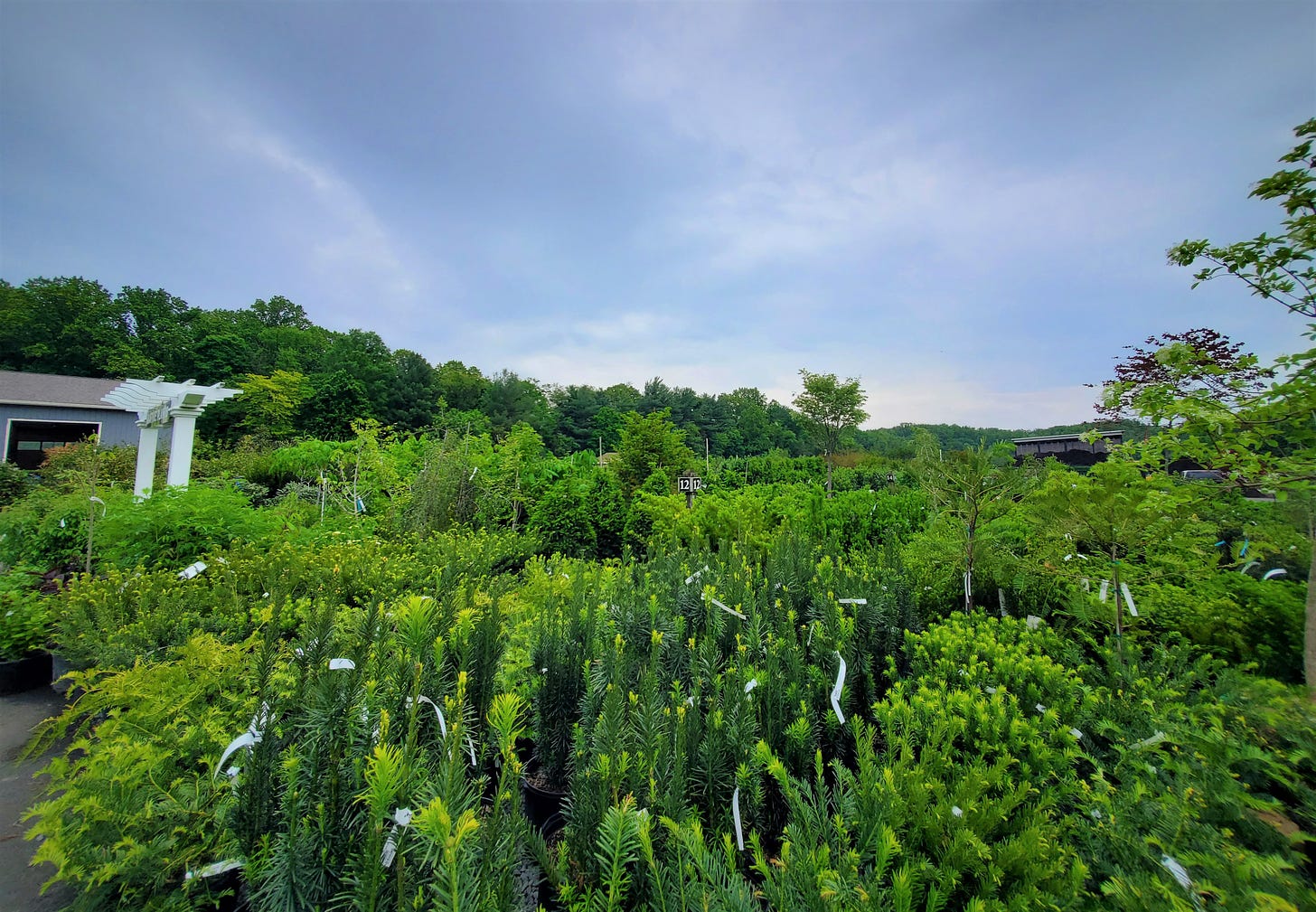
I’m envious--I wish we had something like this in central Florida. In the ‘90s in Longwood, a suburb on Orlando’s north end, we had a small nursery chain called White Rose. It was probably the size of an old-school Walmart, indoor and outdoor, and it had a great collection of plants and gardening stuff. We had two smaller private nurseries on the same street, so you could always find what you were looking for. Then they bulldozed the White Rose for a self storage place, and the two other nurseries became drive-through fast food places. Now if you want plants, you pretty much just go to Home Depot or Lowe’s. I hope your beautiful plant store stays in business a long long time. It sounds idyllic.
I lived in NoVA for two and a half years from 2016 to 2018, and drove by this place on my way home from work everyday. You cannot really see how big it is from the street; you have to go into the store to get a good understanding of its size.